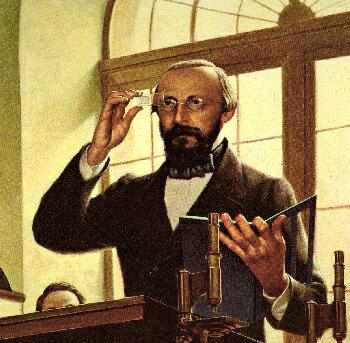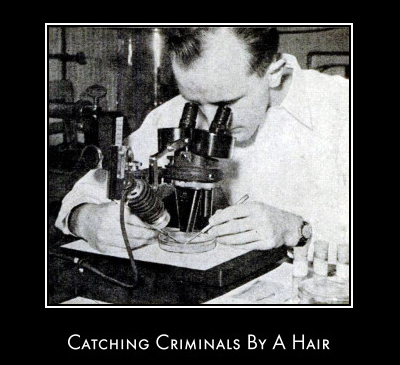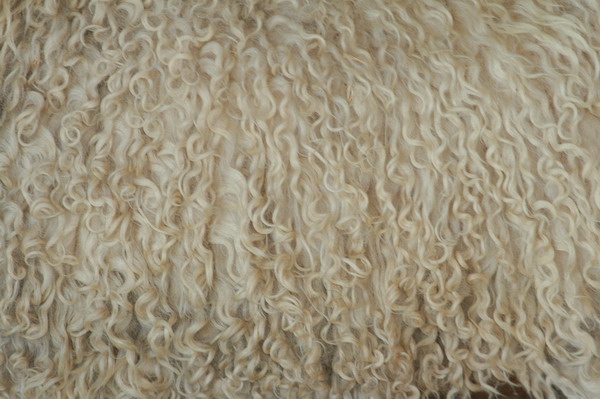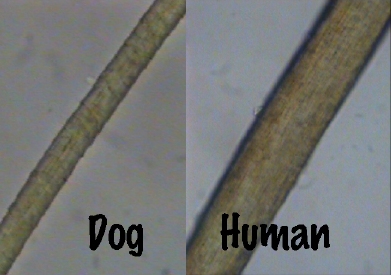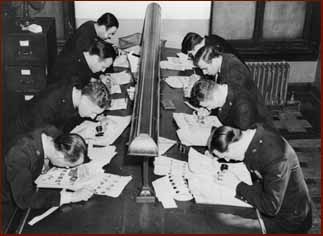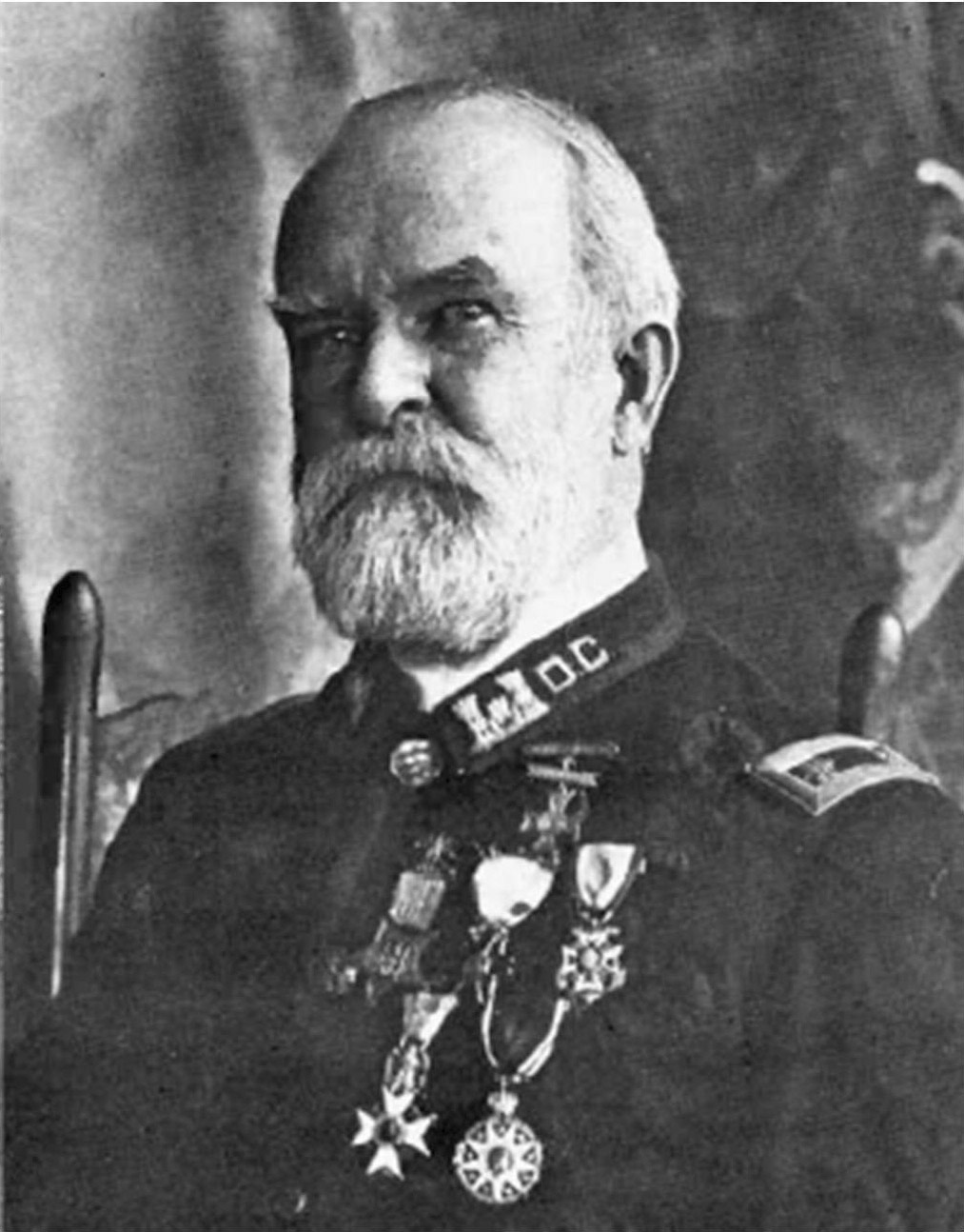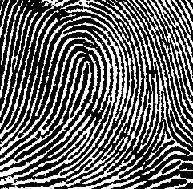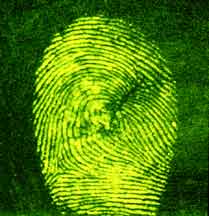1. Arch
In arches, the ridges of the finger run continuous from one side of the finger to the other with no curving. There are two sub-groups that further define the arch pattern:
Plain Arch - this pattern has a consistency of flow to it. It starts on one side of the finger, and then the ridge cascades upward slightly, almost resembling a wave out on the ocean. The plain arch then continues its journey along the finger to the other side. The plain arch is the simplest of the fingerprint patterns to discern.
Tented Arch - this pattern is similar to the plain arch in that it starts on one side of the finger and flows out in a similar pattern to the other side. However, the difference in the tented arch lies in the ridges in the center, which are not continuous as in the case of the plain arch. The ridges, which adjoin each other in the center, converge and thrust upward, giving the impression of a pitched tent.
Tented Arch
2. Loop
In loops, the ridges make a backward turn but do not twist. This backward turn, or loop, is differentiated by how the loop flows on the hand and not how it flows on the card on which the imprint is taken. The imprint on the fingerprint card is similar to the reverse image we see when we look in the mirror at ourselves. There are two sub-groups that were identified in this category:
Radial Loop - these are loops that flow toward the radius bone of the hand or, in other words, when the downward slope of the loop is from the direction of the little finger toward the thumb of the hand.
Ulnar Loop - these are loops that flow toward the ulna bone of the hand or, in other words, when the downward slope of the loop is from the direction of the thumb toward the little finger of the hand.
Ulnar Loop
3. Whorls
In whorls, there are patterns in which there are two or more deltas (first ridge nearest the divergence point of two type lines) and there exists a recurve preceding each delta. There are four sub-groups of whorls:
Plain Whorl - in these whorls, the ridges make a turn of one complete circuit and, therefore, are circular or spiral in shape. The plain whorl is the simplest form of whorl and the most common. There are at least two deltas and a ridge whose circuit may be spiral, oval or circular in shape.
Central Pocket - in these whorls, one or more of the simple recurves of the plain whorl curves a second time.
Double Loop - in these whorls, there are two separate loop formations. In each of these formations, there are two entirely separate and distinct sets of shoulders and deltas.
Accidental Whorl - in these whorls, the composition of the pattern is derived from two distinct types of patterns with at least two deltas. Whorls which contain ridges matching the characteristics of a particular whorl sub-grouping are classified as accidental whorls.
Plain Whorl
4. Composites
In composites, there are patterns found in fingerprints which are combinations of arch, loop and whorl. Henry J. Herschel subdivided the composites into four sub-groups:
Central Pocket Loop - these loops curve a second time forming a pocket within the loop.
Twinned Loop - also referred to as the Double Loop, these loops consist of two separate loop formations.
Lateral Pockets Loop - these loops are similar to the Twinned Loop except that their ridges bend sharply down on one side before recurving, actually forming a pocket. The F.B.I. finds it too difficult to locate these two loops, and classifies both kinds as Double Loops.
Accidental Loops - these loops are a combination of any two types of pattern with the exception on the plain arch that basically has no pattern.
Accidental loops

